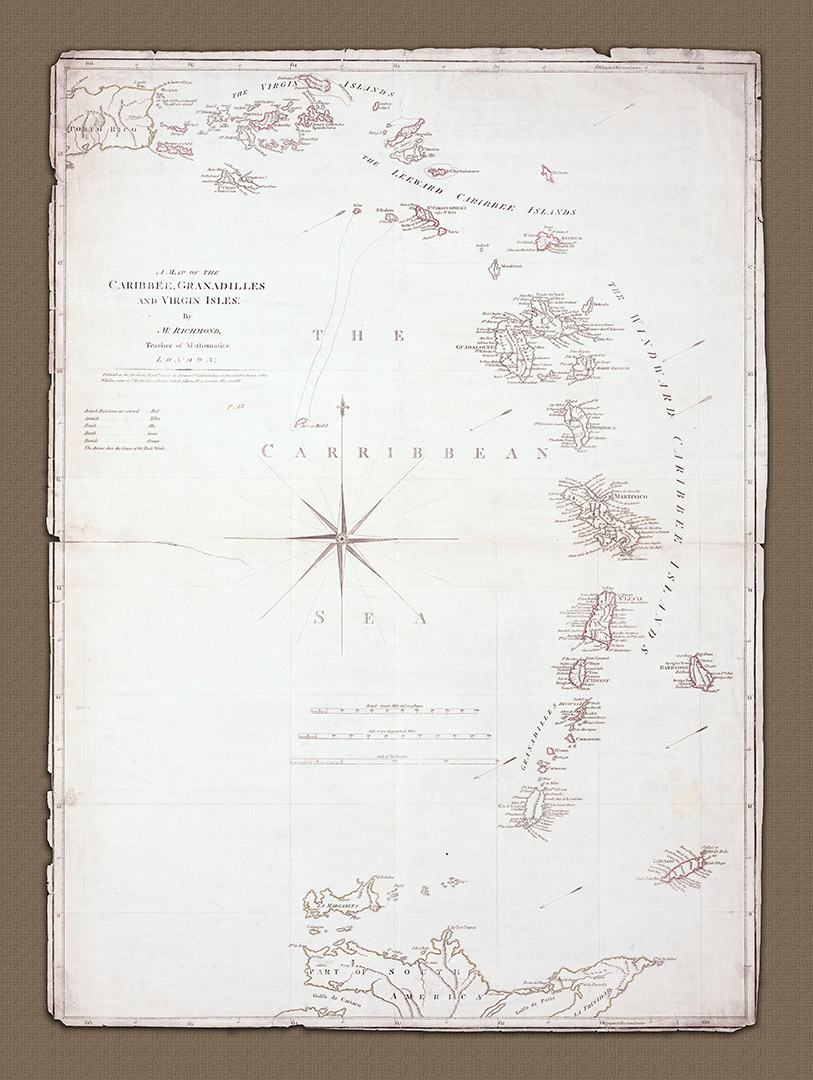The Windward Islands include Martinique, St. Lucia, St. Vincent, the Grenadines, and Grenada are so called simply because they're exposed to the wind of the northeast trade winds. The Leeward Islands include the Virgin Islands, Dominica, Guadeloupe, Montserrat, Antigua, Barbuda, St. Kitts, Nevis, and Anguilla and are so called because away ("lee") from the wind.
It was drawn by M (Matthew?) Richmond 'Teacher of Mathematics'. who held the position of 'schoolmaster' aboard Royal Navy ships. The position of Schoolmaster was created by an Order of Council in 1702 and its function was to oversee the general education of the young teenage midshipmen aboard larger vessels and it carried no naval rank or ranking. The teaching of mathematics was an especially important responsibility because of the need for the young officers to learn navigation.
The scheme, in the early days was not especially successful, partly because the pay for a teacher was no more than 24 shillings a month - the lowest of pay-scale in the civil branch of the service. As a result it rarely struggled to attract more than desperate young men fresh from University who could not afford to pay for their degree.
The islands of the Caribbean had, from the middle 1600s vitally important, for a whole range of goods including sugar. That France, having lost the Seven Years War to Britain in 1763 was willing to give up all of her mainland American territories, West Florida in particular, in exchange for Martinique and Grenada, says it all.
Sugar was Britain's largest single import and this was of course central to the development of the slave trade in the early 18th century. Politically the Islands shared, with the 13 North American mainland colonies, most of the preconditions which had seen them rebel against the Crown. That the Islands did not follow-suit at the time is more than anything down to the role the British navy played in policing the region than any lack of affinity for the Revolutionary cause.
Even though the British managed to retain overall control of the region it did not preclude islands such as Bermuda from supporting the American cause by providing munitions. At the time Richmond made his chart in 1779 the Caribbean was still a tinder-pot of political and military manoeuvrings.
This delightful map covers most of the Caribbean region eastward of Puerto Rico taking-in all of the lesser Antilles, also known as the Windward Islands as well as the Leeward Islands. Each of the islands or island group is colored indicating the country claiming possession at the time, including Britain, Spain, France, Netherlands and Denmark.


